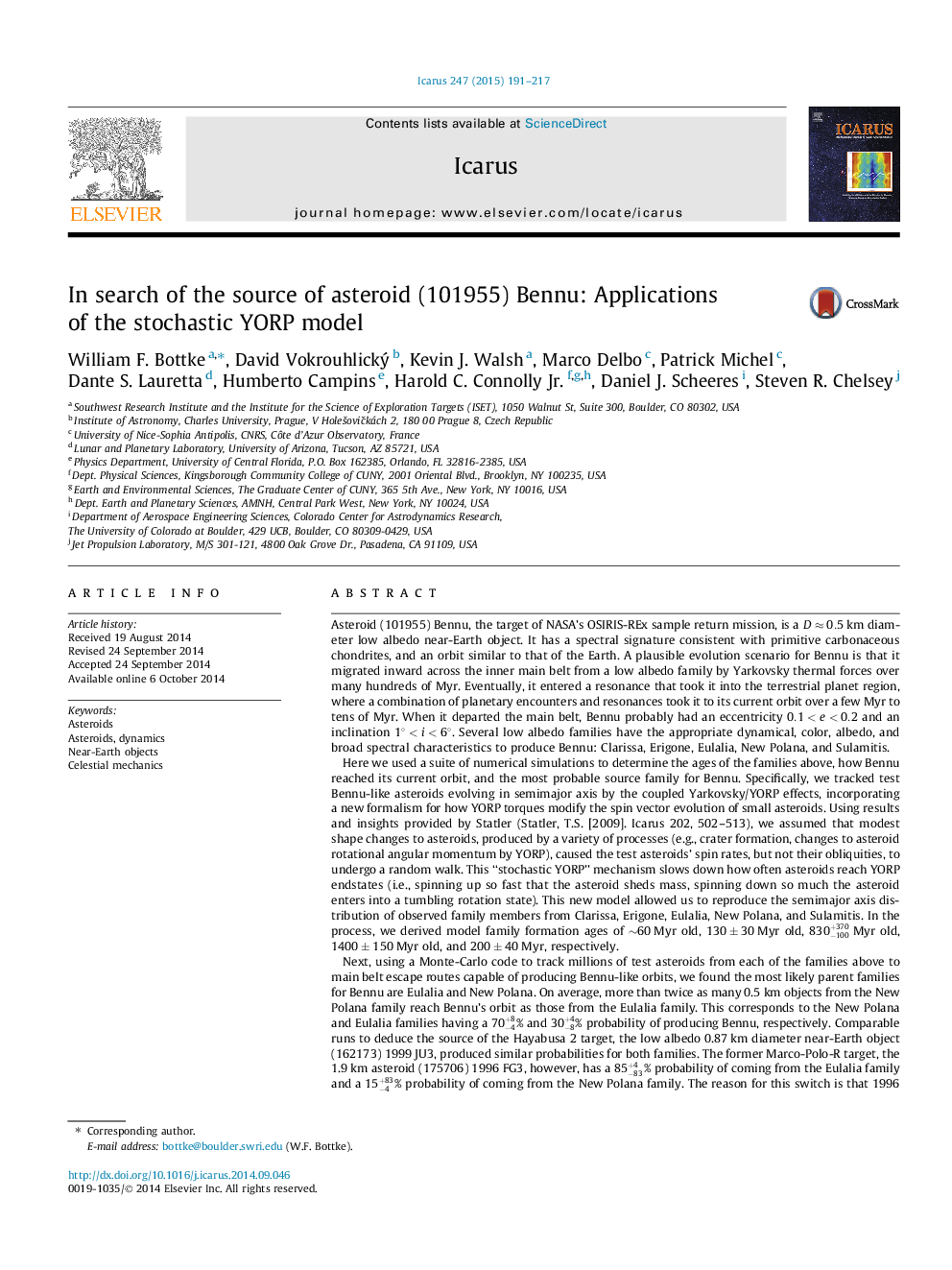| Article ID | Journal | Published Year | Pages | File Type |
|---|---|---|---|---|
| 8137072 | Icarus | 2015 | 27 Pages |
Abstract
Next, using a Monte-Carlo code to track millions of test asteroids from each of the families above to main belt escape routes capable of producing Bennu-like orbits, we found the most likely parent families for Bennu are Eulalia and New Polana. On average, more than twice as many 0.5Â km objects from the New Polana family reach Bennu's orbit as those from the Eulalia family. This corresponds to the New Polana and Eulalia families having a 70-4+8% and 30-8+4% probability of producing Bennu, respectively. Comparable runs to deduce the source of the Hayabusa 2 target, the low albedo 0.87Â km diameter near-Earth object (162173) 1999 JU3, produced similar probabilities for both families. The former Marco-Polo-R target, the 1.9Â km asteroid (175706) 1996 FG3, however, has a 85-83+4% probability of coming from the Eulalia family and a 15-4+83% probability of coming from the New Polana family. The reason for this switch is that 1996 FG3 may have been part of Yarkovsky/YORP-produced wave of like-sized bodies that is only now reaching the terrestrial planet region. We suggest that the top-like shape of Bennu is a byproduct of mass wasting and/or mass shedding events produced by YORP spin up during its long journey across the inner main belt.
Related Topics
Physical Sciences and Engineering
Earth and Planetary Sciences
Space and Planetary Science
Authors
William F. Bottke, David Vokrouhlický, Kevin J. Walsh, Marco Delbo, Patrick Michel, Dante S. Lauretta, Humberto Campins, Harold C. Jr., Daniel J. Scheeres, Steven R. Chelsey,
